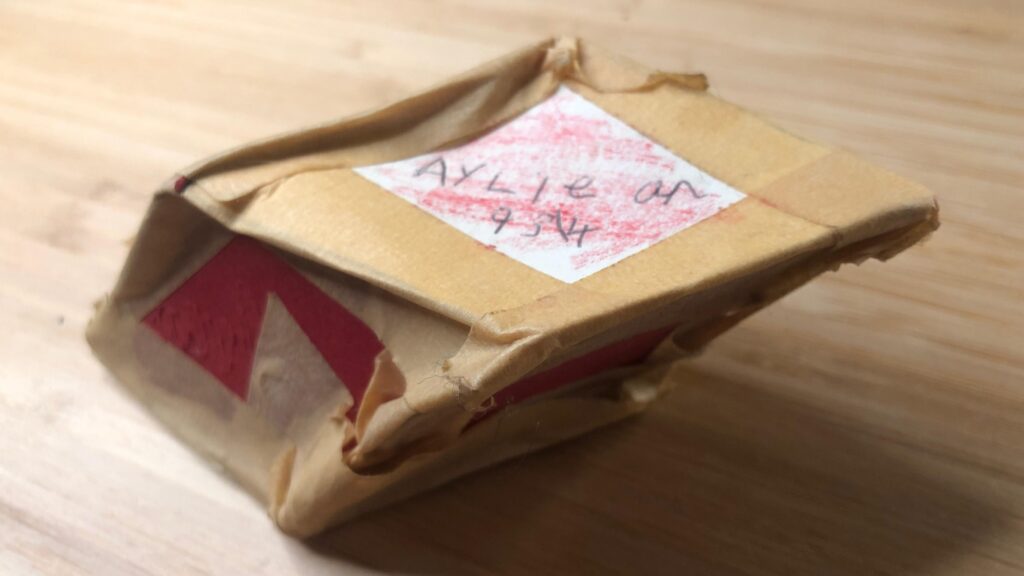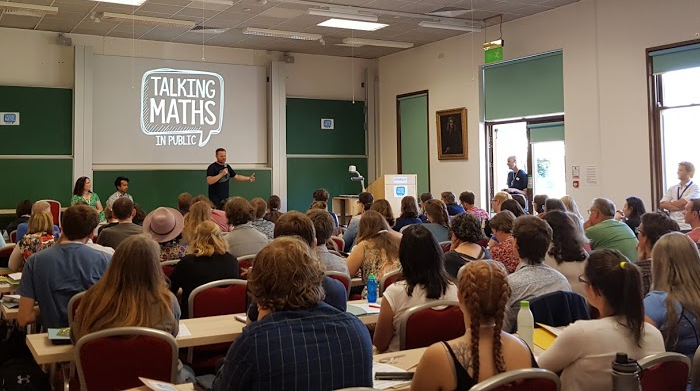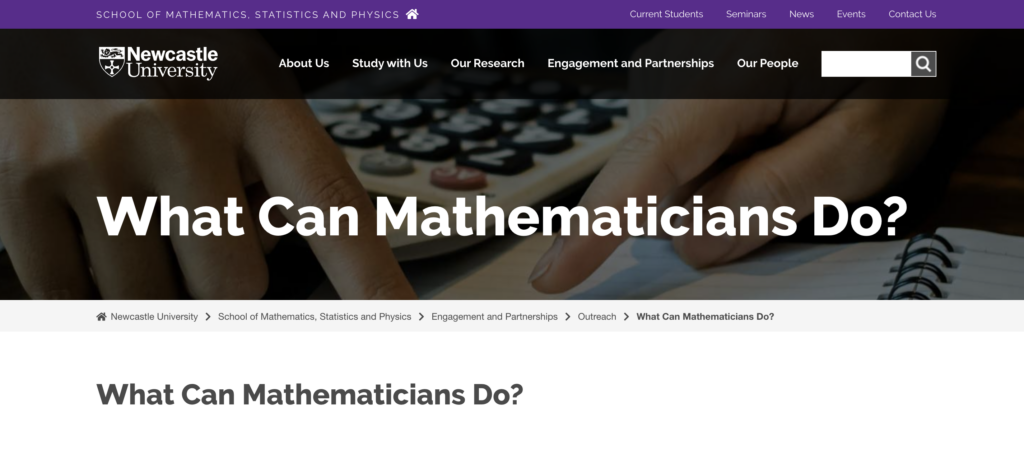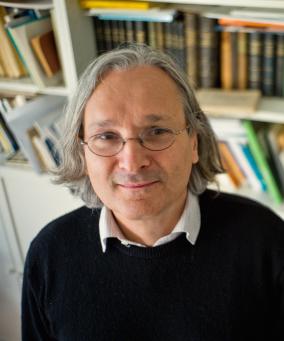Maths Week England happened a couple of weeks ago. I had put my name on the speaker directory, and sure enough a maths lead from a primary school in County Durham emailed me to ask if I could go in and do something for them.
You're reading: Posts Tagged: outreach
Mathematical Objects: Parallelepiped with Ayliean MacDonald

A conversation about mathematics inspired by a very special parallelepiped. Presented by Katie Steckles and Peter Rowlett, with special guest Ayliean.

Podcast: Play in new window | Download
Subscribe: RSS | List of episodes
My conference experience: TMiP 2019
This is a guest post from maths communicator Max Hughes. If you’re thinking about going to the Talking Maths in Public conference this summer, read on to find out what it’s like.
I first attended Talking Maths in Public in Cambridge at the end of August of 2019. At the time I was just about to go into my second year of a maths degree – knowing that I wanted to go into maths communication and outreach after finishing university, and keen to learn more.
Having never attended a conference before, I wasn’t quite sure what to expect when I arrived in Cambridge the evening before it kicked off. Luckily for me, I didn’t need to spend the evening alone in the hotel dwelling on my pre-conference nerves, as there was a planned pub meet up later in the evening for those who had already arrived in Cambridge.
Full of trepidation, I stepped into the lift of the hotel I was staying in, unaware that when the doors opened, I would be transported to a fantastic world of nerdery that I have never since left: the UK maths communication community. This may sound dramatic, but much like Charlie taking his first steps into the chocolate room of Willy Wonka’s factory, or Dorothy opening a door into the technicoloured world of Oz, I knew for certain that this was a seminal moment in my life.
Congregated before me in the hotel lobby was an almost perfect microcosm of the conference attendees. In my first moments at this gathering, I was greeted by a lecturer from my university, multiple popular mathematics YouTubers and speakers, a freelance editor, a couple of teachers and a mathematical knitting enthusiast… to name just a few. The other attendees made me feel almost instantly at ease in this new environment, and I went to the pub confident and excited to see what the rest of the conference would bring.

Day one of the conference started with some useful icebreaker activities followed by an engrossing talk on “Maths on YouTube”. After a short break there was a choice of 5 different workshops to choose from, presented by attendees demonstrating their own mathematical engagement activities. Forever a fan of the fantasy genre, I chose to attend an intriguing workshop that used dragons to engage and excite people about the wonders of mathematics.
The second day started off with my favourite session of the conference; a series of lightning talks by speakers and attendees talking about their work, that covered a diverse range of different types of events and projects, helping to paint a picture of the maths communication landscape not just in the UK, but globally. Following this was an important session on promoting inclusivity within engagement activities, as well as some smaller group discussion sessions and a panel on writing about mathematics. The final keynote session of the day was particularly spellbinding, with magician Neil Kelso informing the crowd on how to astonish audiences, showing that maths and magic have an unexpected amount in common.
By far the best part of the conference was the people, from the attendees brimming with mathematical possibility to the organisers who were passionate and invested in running a conference that was in equal parts informative, accepting and fun. The final morning of the conference was centred around just this, the people, in a range of networking events. This is how I found myself punting along the river Cam with fellow attendees solving maths problems to aid us in a “treasure punt”.
Throughout the entire conference a palpable air of jovial mathematics permeated the space. Whether it was impromptu conversations on mathematical cabaret, tense games of “The Mind”, or mathematical discourse on the toilet blackboards (yes, that’s a thing at the Isaac Newton Institute), the creative expression of mathematical joy was awe inspiring. From exploring the ins and outs of a beautiful city to being engrossed in deep mathematical conversation with a newly made friend, there were new perspectives around every corner.
I can honestly say that Talking Maths in Public 2019 acted as the perfect first step in my journey into the world of maths communication. The skills, contacts, and inspiration I gained empowered me to start properly communicating maths, creating a domino effect that led me to being employed as a maths outreach professional who truly feels part of a community of UK based mathematics communicators.
What Can Mathematicians Do? A series of online talks about maths

I’ve put together a series of online public maths presentations, to take place in the last couple of weeks of term before Christmas.
This came about after a few people on the Talking Maths in Public WhatsApp group complained that we can hardly ever take up requests for a speaker to deliver a fun maths talk due to our disabilities, usually because of the difficulty of travelling to and from an event. I quipped that we should set up a series of talks for non-commutative mathematicians, and then I was told that the department’s EDI committee had a load of money sitting unused in its budget. So I decided to use some of it!
Aperiodical News Roundup – October 2022
Research
AI research company DeepMind said that their AlphaTensor system has discovered a new way to multiply matrices, citing this as the first such advance since the Strassen algorithm was proposed in 1969. AlphaTensor found thousands of algorithms for multiplying matrices of different sizes, but most were not better than the state of the art. Specifically, it found an algorithm for multiplying \(5 \times 5\) matrices in \(\mathbb{Z}_2\) in just 96 operations. There’s a paper in Nature describing how the algorithm was found.
It’s not all over for us humans just yet, though: the DeepMind announcement prompted two algebraists at Linz University, Jakob Moosbauer and Manuel Kauers, to see if they could do even better. After a few days of thought, they published The FBHHRBNRSSSHK-Algorithm for Multiplication in $\mathbb{Z}_2^{5\times5}$ is still not the end of the story on the arXiv, giving an algorithm which does the multiplication in only 95 steps.
Meanwhile, in other computers-helping-humans news, the Lean 3 library mathlib has made it to 100,000 theorems, none of which have been left as an exercise for the reader.
Events
The IMA and LMS have joined forces to offer a new university access programme called Levelling Up: Maths, which aims to address the difficulties that young people of Black heritage face in STEM. A-level students can join the programme, and will be able to access teaching and mentoring in virtual tutorial groups with Black heritage undergraduates, as well as events with Black guest speakers. The programme is also supported by the RAEng, BCS, IOP RSC, MEI and STEM Learning, as well as the Association for Black & Minority Ethnic Engineers (AFBE-UK) and Black British Professionals in STEM (BBSTEM).
What Can Mathematicians Do? is a series of free online public maths presentations organised by Newcastle University’s School of Mathematics, Statistics and Physics, covering a wide range of topics such as how colours mix, how to make a mint on the stock market, and how to pick your next Netflix binge. Aimed at students in school years 10 to 13, the talks are all given by disabled presenters: to show that anyone can be a mathematician, and mathematicians can do anything.
And finally: last weekend, a group of maths communicators (including several Aperiodical editors and regulars) put together a live online 24-hour Mathematical Game Show, featuring mathematical games, games with a mathematical twist, the maths of games and games about maths. The show has raised nearly £5000 for a collection of excellent charities, and the whole show is available to watch back in half-hour or 1-hour segments.
And finally
Nick Berry of the Data Genetics blog has died. The site ran for over a decade, and was described by Alex Bellos as ‘one of best examples of maths outreach on the web […] A brilliant cabinet of curiosities’. Nick passed away peacefully at home on Saturday October 8th after a long battle with cancer. (via Alex Bellos on Twitter)
Phil Goldstein, aka magician Max Maven, has died. Max Maven popularised the Gilbreath principle, which underlies a host of astonishing mathematical card tricks. (via Colm Mulcahy on Twitter)
Talking Maths in Public
In 2017, the University of Bath hosted the first Talking Maths in Public conference, a gathering for UK maths communicators. As part of the event, attendance bursaries were awarded to students interested in maths outreach, and the recipients of the bursaries wrote about their experiences. To celebrate the fact that a second TMiP conference will be happening this year (booking is open now, and we’re all going to be there!), we’re sharing their report of TMiP 2017. You can find out more about this year’s event (which also includes a bursary scheme) at talkingmathsinpublic.uk.
This post was jointly written by Imogen Morris, (University of Edinburgh), David Nkansah (University of Glasgow) and Olivia Sorto (University of Edinburgh).

First Clay Award for Dissemination of Mathematical Knowledge goes to Etienne Ghys

The Clay Mathematics Institute is best known for handing out a cool million in return for answering a hard question, much like Chris Tarrant.
Anyway, that’s not all they do! The Institute says it is “dedicated to increasing and disseminating mathematical knowledge”, and that now includes handing out an award for Dissemination of Mathematical Knowledge. The first recipient is research mathematician, Frenchman, and all-round top chap Etienne Ghys.
